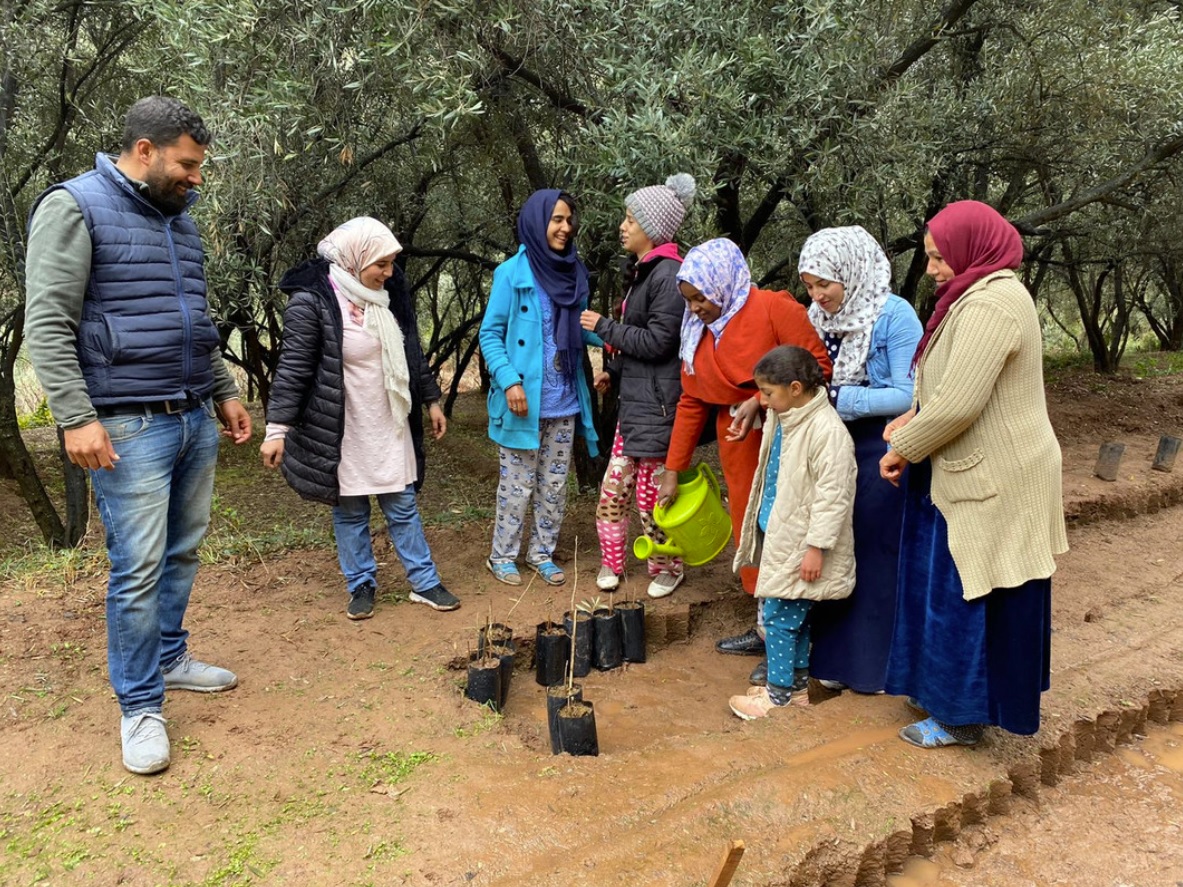Concept Statement : The Anti-Eremetic Cloister
Spring 2021 | Thesis critics: Karen Van Lengen, FAIA + Alexander YuenReinterpreting interfaith rural spaces
Statement | Story | Program | ContextStatement
The thesis is about understanding rural areas as the front lines of cultural change: the threshold point at which theoretical legal reform diverges from what is actually happening. Dialogue between different faiths is a unifying, galvanizing force that, when paired with sustainable initiatives, enables new possibilities for prosperity.


The cloister is traditionally a Christian place of seclusion with walls as edges. Stripped of religious content, it is a spatial language found and interpreted across many cultures: a refuge from the elements framed by columns. Even more simply, it is a path.
The proposal is a new, expanded idea of what a cloister can be: a sanctuary radically open to the world in its multitude of colors, creeds and countries.
The Story


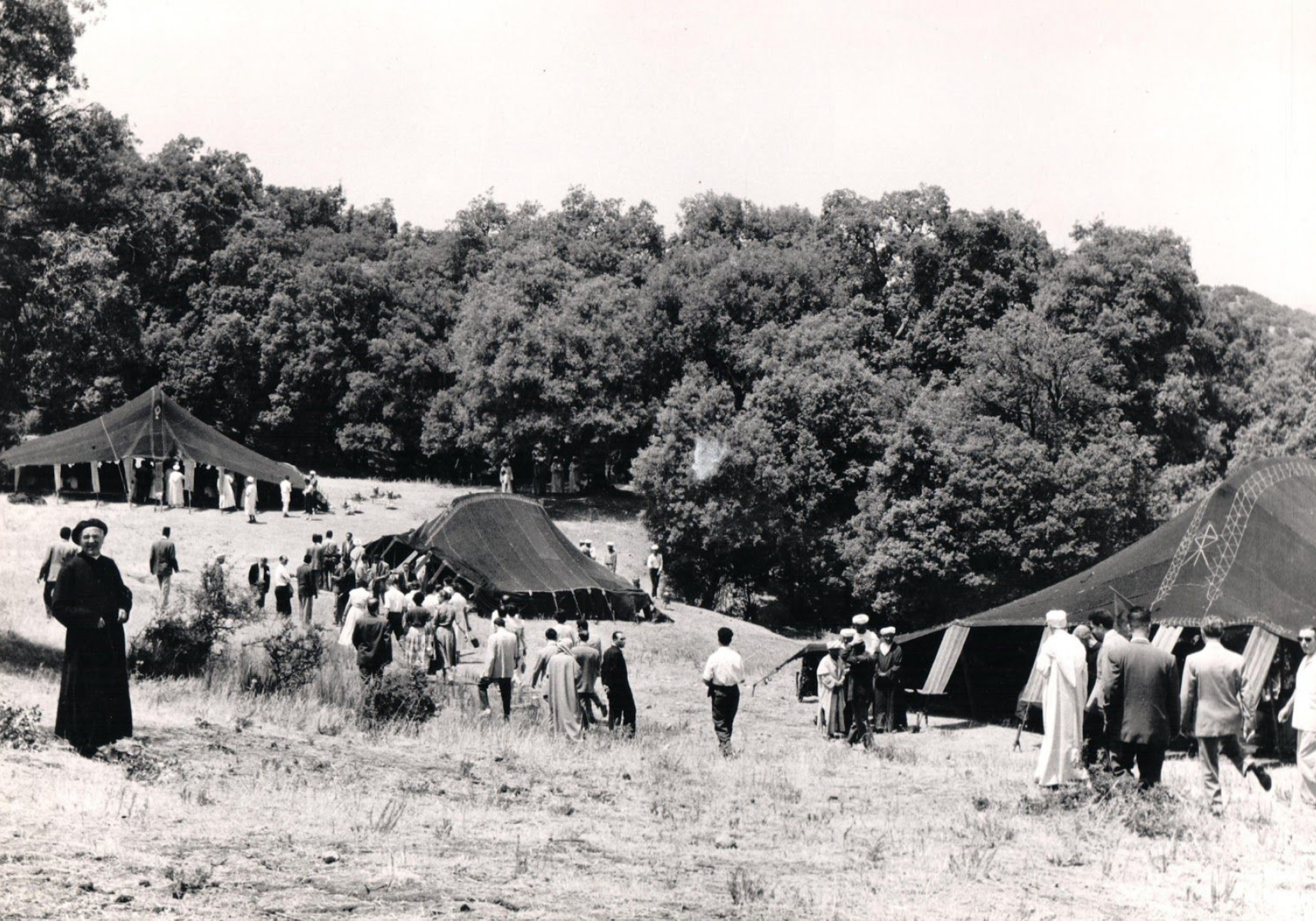
Sixty-five years ago, right at the moment of decolonization in Africa, a newly arrived group of European Benedictine monks in Morocco were brought together by circumstance with young political organizers of the Moroccan Independence Party. At Toumliline, they together pioneered a summer camp. Rather than focusing on religious conversion, they aimed to collaboratively generate visions of the future as monks and youth alike struggled to understand their changing world. Months later, when French rule finally fell and the people were free, the unlikely alliance of Toumliline carried forward a great experiment in decolonization that drew global renown, royal patronage, and enduring commitment from the nearby community of Azrou.





Now in 2021, a new partnership of diplomats, sustainable development practitioners, succeeding generations of local Moroccans, and one American architecture student via Zoom, are prepared to reinterpret the site, which is now desacralized, meaning a ceremony was performed to render the site non-sacred.
Program


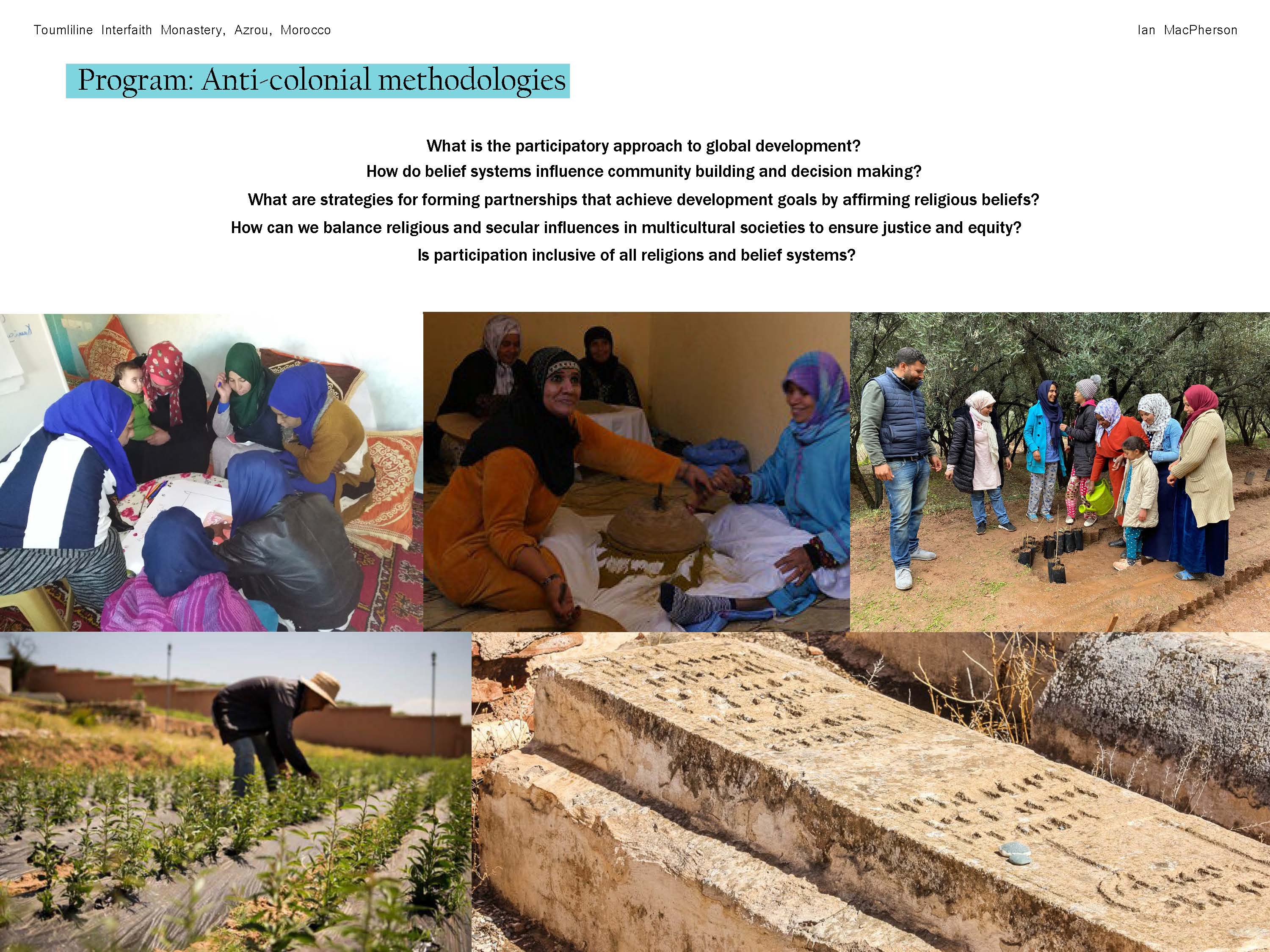

Cross pollinating international development, cultural landscapes, and design allowed me to learn from my mentors and compare their readings of the environment to my own, and discover exciting new case studies to inspire architecture. It also meant uncovering the human dimension to architecture, namely place identity, and situating myself within a lineage of spatial experimentation.
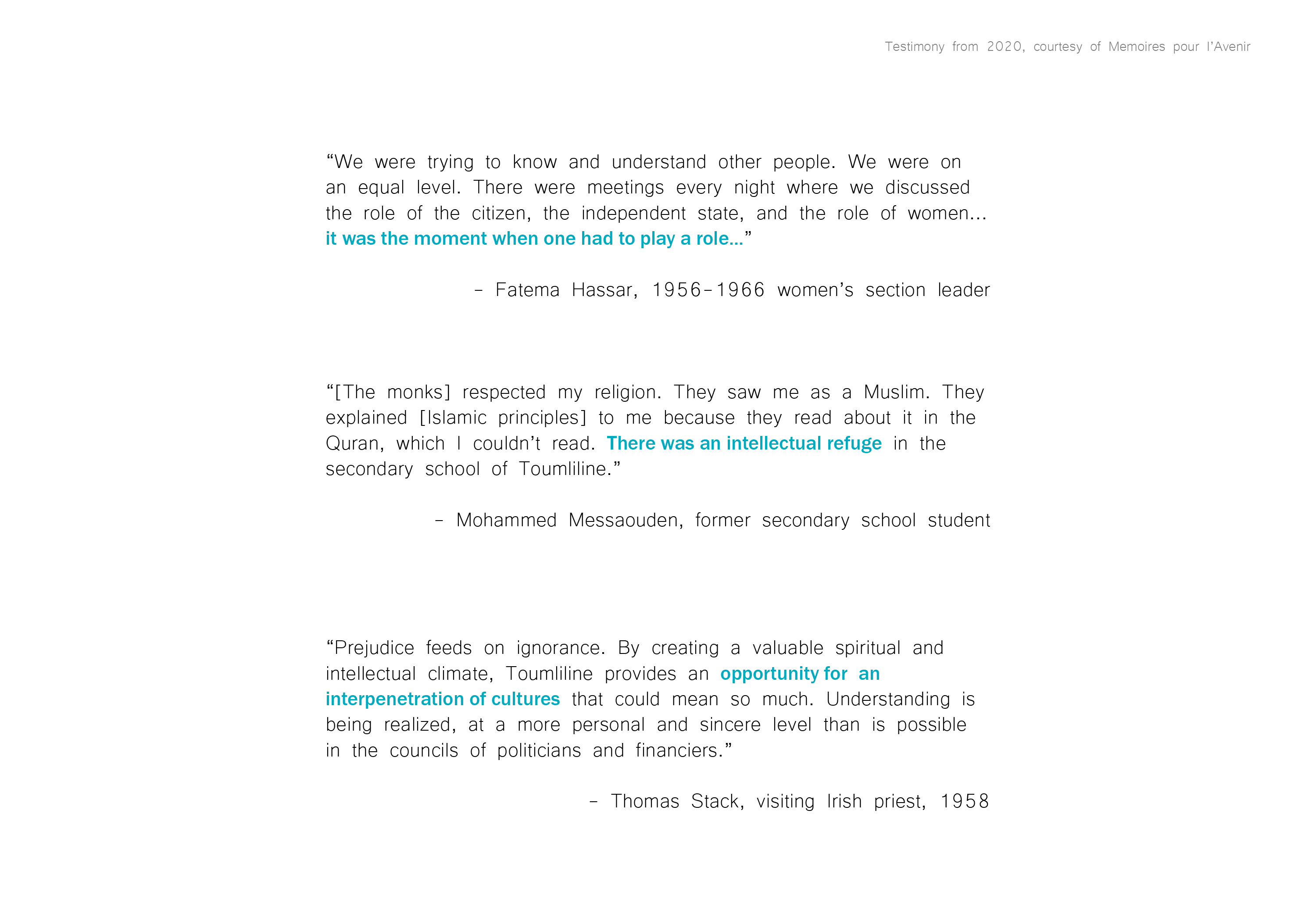


The renaissance of Toumliline involves an existing comprehensive plan to reprogram the old buildings for cultural and educational use and to breathe new life into the legendary aromatic cloister garden. There is no gesture, however, toward the expanded landscape: that is the thesis project’s area of opportunity.
Context
Over the course of this semester, through remote collaborative practice, I have gotten a view into the country of Morocco, a profoundly multicultural, imperfect, but aspirational place situated between many identities.




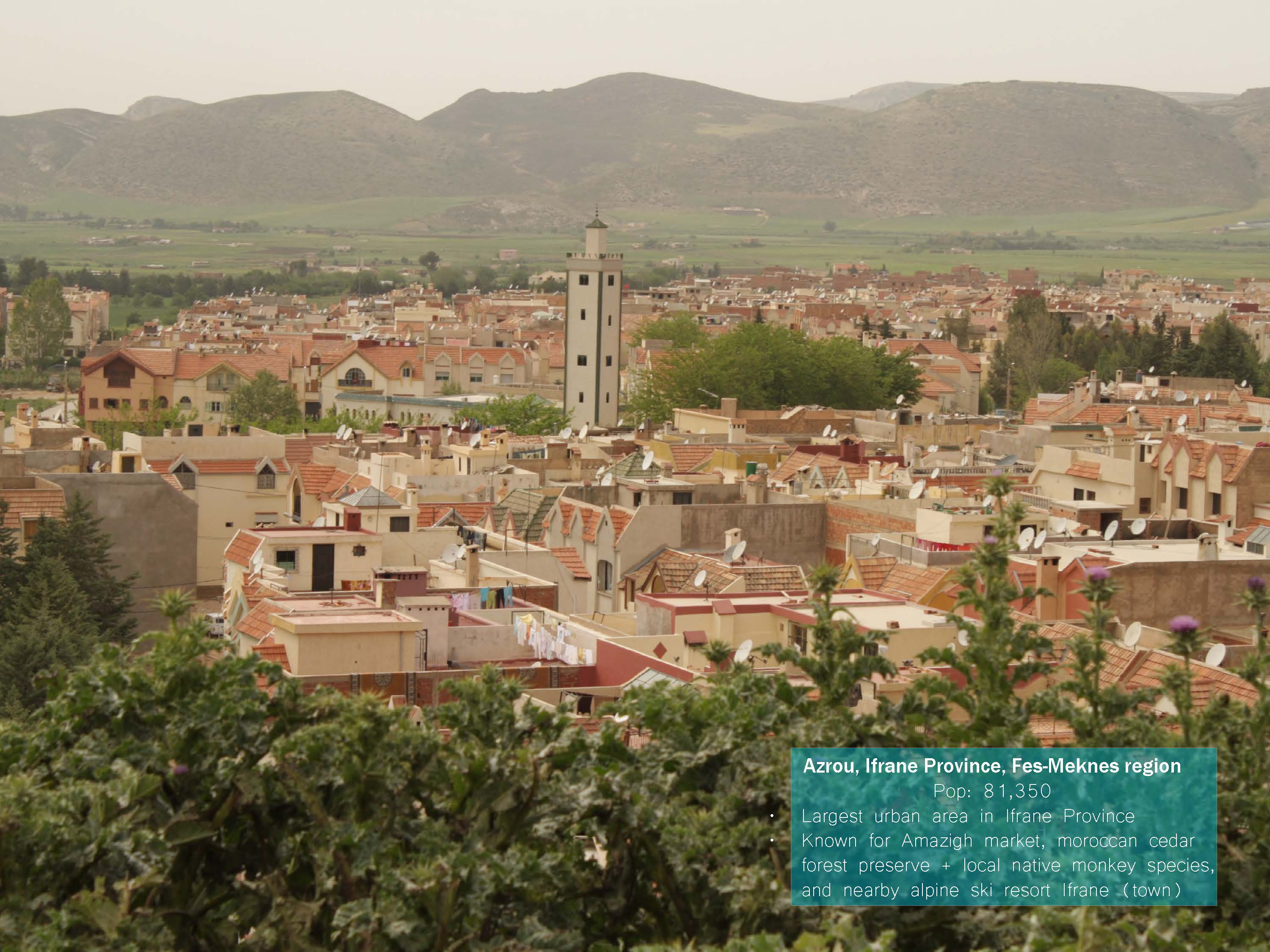
Thesis Phases

